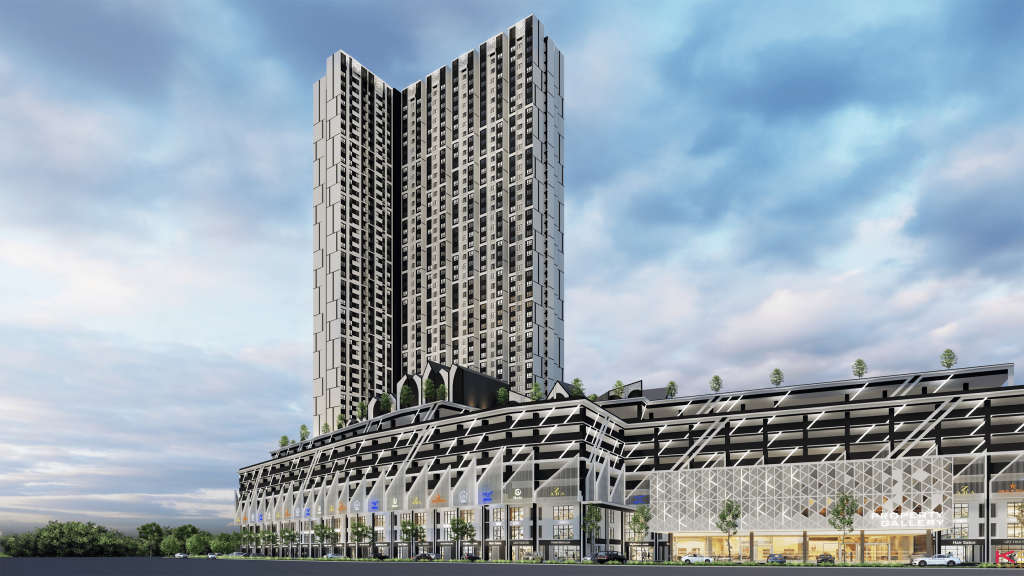By Joseph Wong
For generations, Malaysians have lived by an unwavering belief: Buy property. It never depreciates. This axiom has been deeply ingrained, marketed as an infallible shield against inflation, a tangible emblem of success and a steadfast repository of wealth consistently outpacing market volatility. Yet, in the current economic landscape, this long-held conviction is beginning to appear dangerously obsolete.
Across the vibrant expanse of the Klang Valley and beyond, a growing number of property buyers are facing a harsh reality. Many owners’ newly acquired homes are worth significantly less than the price they paid, often from the very day they receive their keys. This troubling phenomenon is not merely a consequence of typical market corrections. Instead, it points to a deeply entrenched, industry-wide pattern, hiding in plain sight.
This pattern has been silently enabled by nearly every major stakeholder within the property sector and its insidious effects are now distorting Malaysia’s property data, inflating risk within the banking sector and quietly eroding public trust in what was once considered the safest of investments.
A sharp drop that tells it all
To illustrate the gravity of this issue, consider a mixed development in Kota Damansara. Launched in 2016 with an average pricing of RM750 per sq ft (psf), units in this development are now reselling for as low as RM268 psf since their handover in 2020. This represents a staggering plunge of up to 64% in value in one of the Klang Valley’s more prominent and desirable addresses.
How does such a dramatic devaluation occur? The answer lies behind the scenes, obscured by a web of undisclosed rebates, inflated loan approvals and pricing tactics designed to mask the real transaction value. Alarmingly, this is not an isolated incident. This deceptive pattern is increasingly spreading across the broader Malaysian property market, turning a blind eye to genuine market fundamentals.
What initially began as seemingly well-intentioned tools to enhance affordability such as rebates, cashbacks and zero-entry packages have gradually mutated into a pervasive mechanism that profoundly distorts the market. The playbook for this distortion is alarmingly simple yet highly effective:
- Inflate the sale price on paper: The property’s listed price is artificially inflated beyond its true market value.
- Offer hidden discounts or under-the-table deals: Buyers receive undisclosed rebates or cashbacks that are not reflected in the official Sale and Purchase Agreement (SPA) submitted to banks.
- Secure a bigger loan: With the inflated paper price, buyers can qualify for a larger loan amount than the property's actual value would justify.
- Bank disburses funds based on inflated figures: The bank, relying on the inflated figures, disburses a larger sum.
- Buyer walks away with spare cash but the market records an artificially inflated high: The buyer receives a portion of the inflated loan amount as cash, effectively covering their downpayment, legal fees or even renovation costs. Meanwhile, the official transaction record registers a new, artificially high benchmark price, further skewing market data.
This troubling practice is no longer confined to new project launches. It has insidiously crept into the sub-sale market, where layers of regulatory checks are often thinner and incentives more fragmented, making detection even more challenging. The silence from various stakeholders only exacerbates the problem.
A tangled web
The intricate web of mark-up loans implicates every major player in the property ecosystem, each contributing, knowingly or unknowingly, to the brewing price bubble.
Real estate agents in the sub-sale market are increasingly found advising clients to mark up sale prices. Their motivation is to enable buyers to qualify for larger loans. This strategy helps prospective buyers cover not only downpayments and stamp duty but also renovation costs, furnishings and even cash-out needs. all while pushing artificially inflated numbers into the official transaction record. For the integrity of the market, agents must prioritise transparency by disclosing net transacted values and cease advising deals that distort loan values for short-term gains.
On the property developers’ side, what once aimed to improve accessibility for buyers has transformed into a blueprint for artificial inflation. Many employ a range of incentives not solely to attract buyers, but crucially, to keep the price artificially high. This ensures loan eligibility for buyers and maintains a favorable market positioning for their projects, even if the actual price paid by the buyer is significantly lower.
Let's say a new unit is priced at RM650,000 and the buyer gets a loan for 90% of that price. The developer might seem helpful by giving a 10% discount and other perks. But what if the home is actually only worth RM500,000? This means the buyer is stuck with a RM585,000 loan for a property that is really worth much less.
Developers must take the lead in pricing integrity by clearly publishing net prices that reflect the actual financial outlay required from the buyer, rather than resorting to creative financial packaging.
As for financial institutions, they find themselves lending on what is increasingly becoming a house of cards. Valuations based on inflated comparable sales keep loans flowing, yet these figures are dangerously detached from genuine economic fundamentals. When the inevitable market correction hits, banks will be left holding a portfolio of over-financed assets. To mitigate this systemic risk, banks must enforce full rebate disclosure from developers. Furthermore, they must leverage technology tools to verify pricing accuracy and flag anomalies that indicate inflated values, ensuring that loans are based on realistic market worth.
The data gatekeepers come under pressure
When the fundamental market data is flawed, valuers become unwitting accomplices in this detrimental cycle. Some valuers reportedly face immense pressure to validate inflated pricing in order to keep the deal moving and avoid jeopardising transactions. This compromises their professional independence and the integrity of the valuation process. It is imperative that valuers demand verified net transaction data, not just headline figures. Simultaneously, regulators must actively back their independence and provide the necessary safeguards against undue pressure.
As National House Buyers Association (HBA) honorary secretary-general Datuk Chang Kim Loong aptly puts it: "One common theme that must flow throughout the housing industry is that of certainty. Certainty as to the obligations of both contracting parties; certainty of the price of a property; certainty as to when and how title is passed to the buyers; certainty as to the quality of housing that the buyers gets after signing half his financial life away and certainty as to the terms and conditions in the Sale and Purchase Contract and the house buyers rights and entitlements as well as the housing loan he signed and bound himself.”
Malaysia’s property ecosystem is not irrevocably broken but it is undeniably misaligned. The longer stakeholders delay recalibration and fail to address these deep-seated issues, the more severe and painful the eventual market correction will be.
Stay ahead of the crowd and enjoy fresh insights on real estate, property development and lifestyle trends when you subscribe to our newsletter and follow us on social media.














































